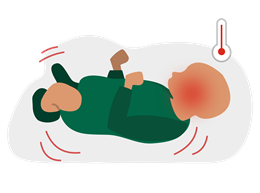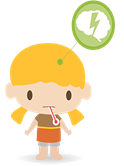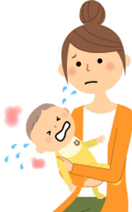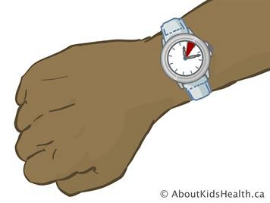Disclaimer: This material is for educational purposes only. You, the reader, assume full responsibility for how you choose to use it. It is not intended to provide medical advice, diagnosis or treatment, nor does it replace the advice or counsel of a doctor or health care professional. Reference to a specific commercial product or service does not imply endorsement or recommendation of that product or service by CPCMG.
Why is my child having a febrile seizure?

- 3-4 out of every 100 healthy children will have a seizure when they have a fever.
- The most common age range for occurrence is 6 months to 5 years old.
- Usually, children have outgrown them by 5 years old.
- About one-third of kids who have had a febrile seizure will have another one.
- The seizure can happen at any elevated temperature, but is more common when temperatures rise rapidly, and with temperatures of 102℉ and above. They usually happen within the first few hours of the fever.
- Usually, these fevers are caused by viral infections.
- Febrile seizures are known to be hereditary – this means that a child is more likely to have a febrile seizure if someone else in the family (parent or sibling) also has or had them.
What are the symptoms of a febrile seizure?

- Your child may stiffen parts of or even their entire body.
- Your child may rigidly shake one or more parts of their body.
- The seizure usually doesn’t last more than 3 to 4 minutes but can go longer.
- Your child may breathe differently during the seizure.
- Your child will be unresponsive to your touch or sound.
- Your child’s eyes may roll.
- After the seizure, your child may seem more tired, fussy, or confused.
- This should only happen for a short period of time and then your child should return to their normal activity level.
How do I help my child during a febrile seizure?
- Ensure your child is away from risk of injury from any sharp or hard objects.
- Roll your child onto their side.
- Make sure their face is turned to the side to allow any saliva or vomit to drain out.
- Do not place anything into their mouth.
- Call your child’s provider, your child does need to be seen.
- If the seizure lasts longer than 5 minutes call 9-1-1
How do I prevent febrile seizures?

- There is no one way to prevent a febrile seizure.
- Although it is scary to most caregivers, it is not dangerous and does not lead to any long-term health consequences.
- Just because your child had a febrile seizure, it does not mean that they are more likely to develop other types of seizures or have epilepsy.
- Keep your child up-to-date on vaccines.
- Keep your child away from any sick contacts.
- Encourage frequent hand washing.
- Clean high touch surfaces regularly.
- Tylenol and ibuprofen are helpful for fever but will not prevent a febrile seizure.
When to call your child’s provider:
- Your child had a febrile seizure or any seizure like activity.
- Your child has trouble breathing.
- Your child has experienced a fever for five days.
- If your child’s seizure lasts longer than 5 minutes, call 9-1-1.
This publication was adapted from information within American Academy of Pediatrics Patient Education Handouts, UpToDate Guidelines and Healthychildren.org
Reviewed by: TT D.O, AR D.O. | 11/2023



